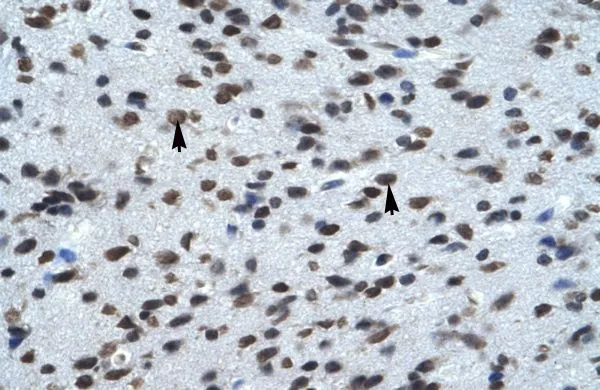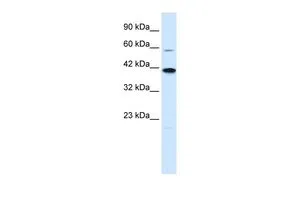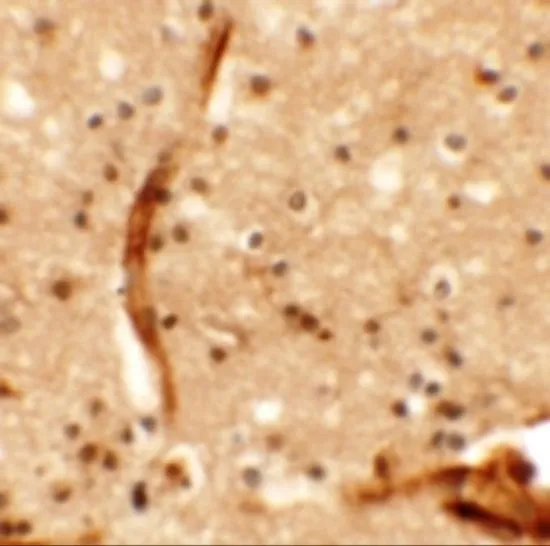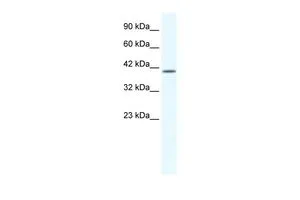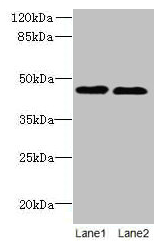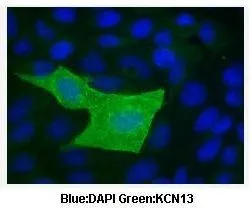
ICC/IF analysis of MDCK cells using GTX47656 KCNK13 antibody at 1:100. Blue : DAPI Green : KCN13
KCNK13 antibody, C-term
GTX47656
ApplicationsImmunoFluorescence, Western Blot, ImmunoCytoChemistry, ImmunoHistoChemistry, ImmunoHistoChemistry Paraffin
Product group Antibodies
TargetKCNK13
Overview
- SupplierGeneTex
- Product NameKCNK13 antibody, C-term
- Delivery Days Customer9
- Application Supplier NoteWB: 0.2-2.5 ug/ml. IHC-P: 2-10 ug/ml. *Optimal dilutions/concentrations should be determined by the researcher.Not tested in other applications.
- ApplicationsImmunoFluorescence, Western Blot, ImmunoCytoChemistry, ImmunoHistoChemistry, ImmunoHistoChemistry Paraffin
- CertificationResearch Use Only
- ClonalityPolyclonal
- Concentration0.5-1 mg/ml
- ConjugateUnconjugated
- Gene ID56659
- Target nameKCNK13
- Target descriptionpotassium two pore domain channel subfamily K member 13
- Target synonymsK2p13.1, THIK-1, THIK1, potassium channel subfamily K member 13, K2P13.1 potassium channel, potassium channel, subfamily K, member 13, potassium channel, two pore domain subfamily K, member 13, tandem pore domain halothane-inhibited potassium channel 1, tandem pore domain potassium channel THIK-1
- HostRabbit
- IsotypeIgG
- Protein IDQ9HB14
- Protein NamePotassium channel subfamily K member 13
- Scientific DescriptionPotassium channels represent the most complex class of voltage-gated ion channels from both functional and structural standpoints. Their diverse functions include regulating neurotransmitter release, heart rate, insulin secretion, neuronal excitability, epithelial electrolyte transport, smooth muscle contraction, and cell volume. This gene encodes a potassium channel containing two pore-forming domains. This protein is an open channel that can be stimulated by arachidonic acid and inhibited by the anesthetic halothane. [provided by RefSeq, Jul 2013]
- Storage Instruction-20°C or -80°C,2°C to 8°C
- UNSPSC12352203

